With its status as undoubtedly the biggest, most recognizable, and (officially) the most reputable luxury watch manufacturer on the planet, it can be difficult to imagine anything from Rolex going by the term 'underrated.' But for every Lennon and McCartney, there has to be a George Harrison; and when it comes to Rolex, the Rolex Explorer ref. 1016 is it.
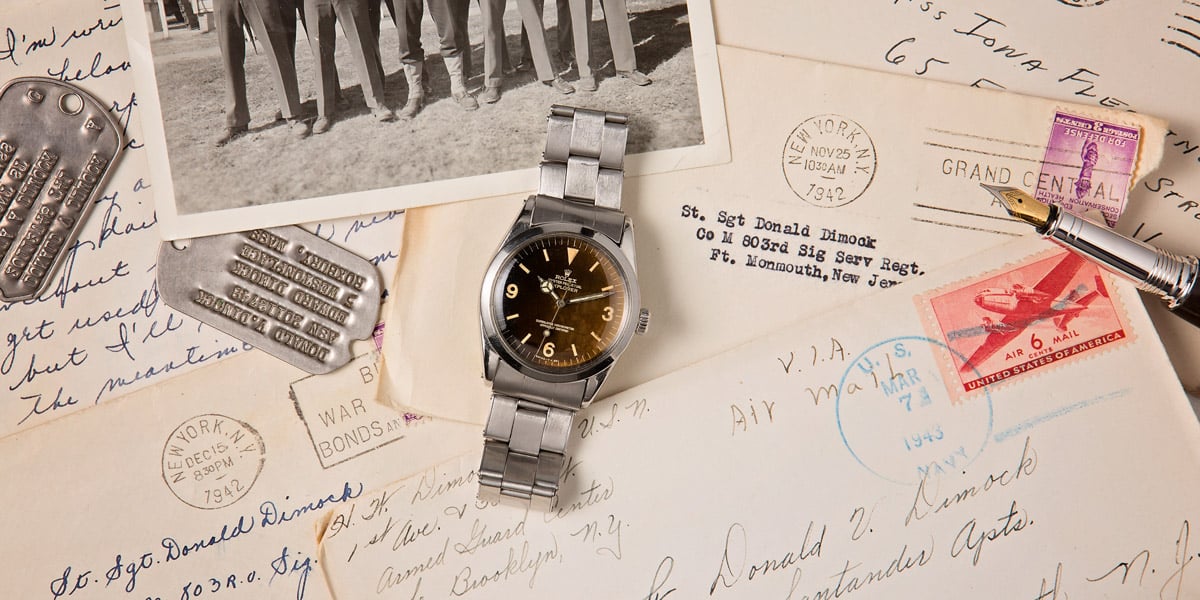
Its origins are known well enough. Debuting in 1953, the first of the Explorers was a descendent of the Oyster Perpetual models the brand sent to the top of the world on the wrists of Hillary and Norgay. Although some experts hold the inaugural references as the dawning of a new genus of timepiece - what would go on to be called the tool watch - they didn’t actually possess any special functions or abilities to aid in a particular occupation. In fact, they didn't even tell the date. At a push, you could get lubricants that would keep the piece running at temperatures between -20 and +40°C, in case you fancied a crack at Everest yourself.
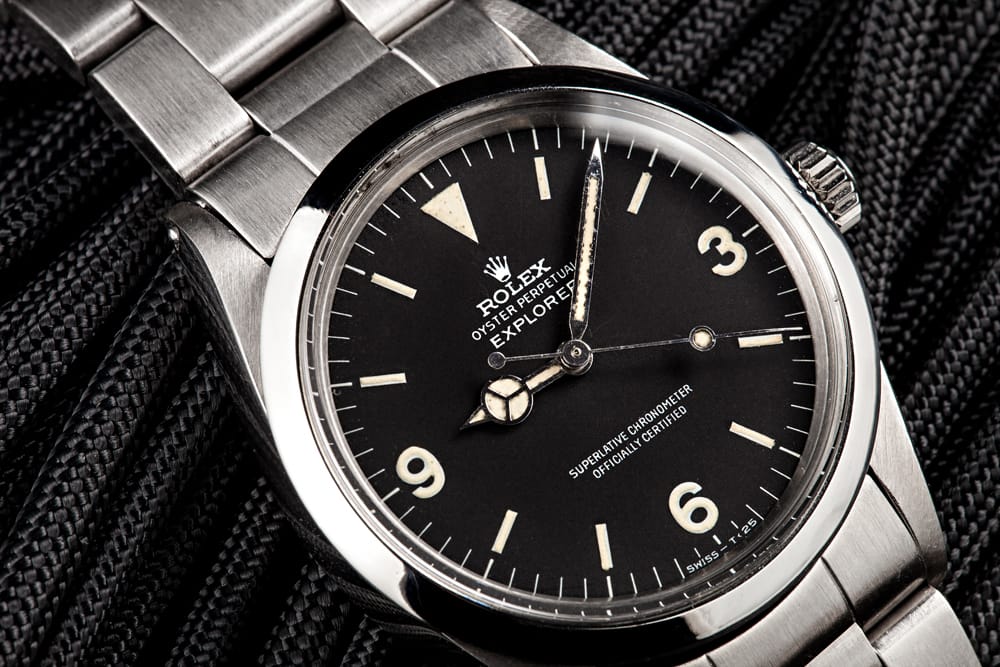
While the design and engineering prowess were appreciated at the time, the Explorer suffered a similar fate as the Milgauss, another greatly undervalued model. In short, they were released during Rolex’s first great golden age, an era which also brought us a pair of true legends that cast too great a shadow: the GMT-Master, first stop for all luxury travelers and the pilots who transported them; and the Submariner, beloved of Scuba divers and of the best friend Rolex ever had, James Bond. Against those two, all else would struggle.
Yet ironically, the creator of the British super spy, author Ian Fleming, was a lifelong fan of one particular reference of that perpetual underdog, the Rolex Explorer ref. 1016.
Modest, humble, but elegantly sophisticated, it was the ideal choice for the ex-Naval Intelligence officer, and indeed anyone whose job relied on both the highest standards of quality and on not drawing attention to themselves. It is a piece that is only now starting to get the appreciation it deserves, so below we will look at one of Rolex's longest-serving icons.
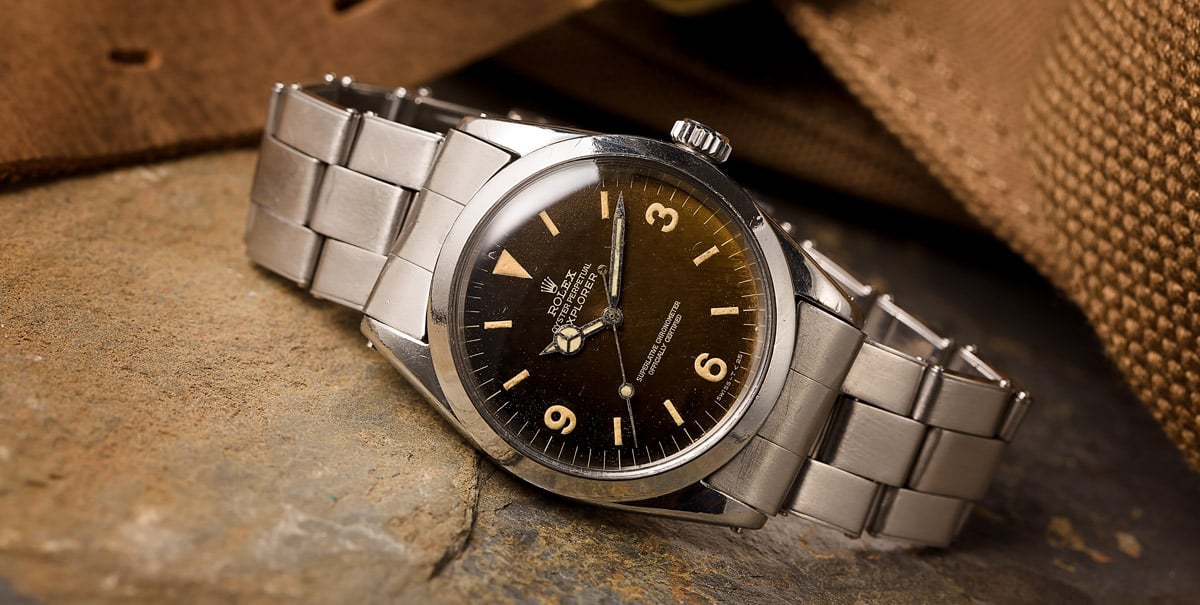
First arriving in 1963, the ref. 1016 Explorer stayed in production for over a quarter of a century. Yet unlike the other big but similarly underperforming reveal from Rolex that year, the Daytona, any changes to the 1016’s aesthetics throughout its entire run were barely noticeable. Clocking in at an era-standard 36mm, it shared a case with the Datejust of the period, the ref. 1600. But by omitting the date display, and crucially, the Cyclops magnifying lens, it remained the more symmetrically appealing of the two.
It was the third iteration of the watch in just a decade, taking over from the ref. 6610, the model which had cemented many of the design features that would go on to define the series as a whole. Most importantly - that emblematic dial, with the inverted triangle at the 12, the Mercedes hands and, of course, the supremely legible 3/6/9 numerals; all the easier to read while sheltering from a whiteout on your ascent of the north face.
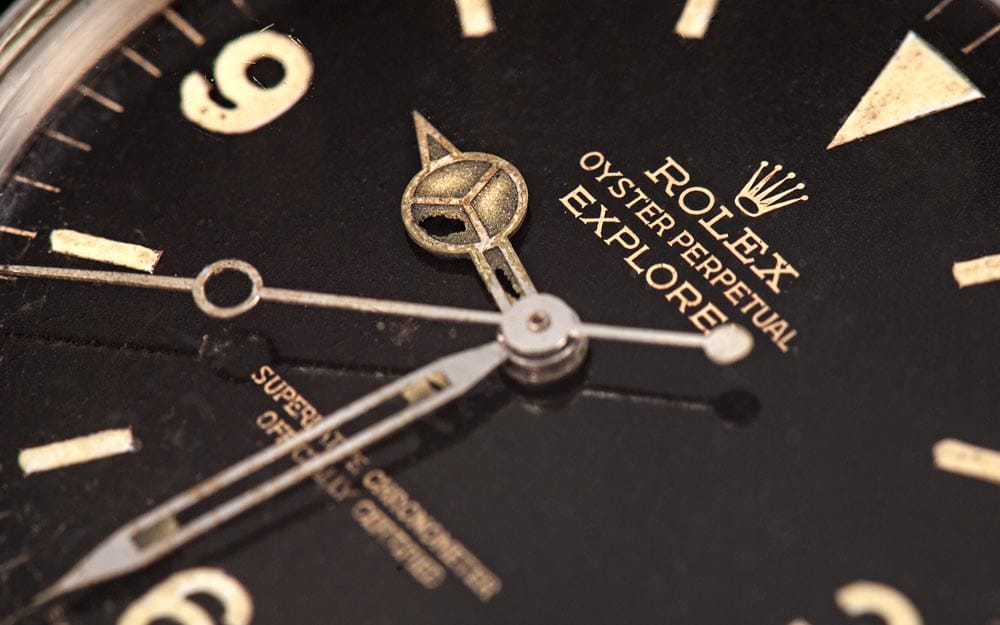
The earliest examples of the watch were issued with black glossy gilt dials with their warm gold indexes and text. They arrived around the time the world started to cotton on to the fact that radium, the luminescent material used on hands and hour indexes, may have certain unfavorable health effects, in that it made those manufacturing the dials die a horrible death. The switch to the much safer tritium occurred shortly into the 1016’s tenure, leading to 'T Swiss T' or 'Swiss T<25' being printed on the dial under the six o'clock, instead of the previous ‘Swiss’. It is the far rarer, earlier 'gilt' examples, of course, which have become the most sought out on the preowned market.
Other than that, the caliber received a major upgrade over the ref. 6610, introducing the Cal. 1560 to the series. Part of the first truly in-house range of movements Rolex had made, it was built around the architecture of the base caliber, the Cal. 1530. COSC-certified and with a frequency of 18,000vph, the 1560 became the go-to for the brand's sports watches of the time, including the grail-like Submariner ref. 5512. Additionally, thanks to a thicker domed acrylic crystal, a feature that makes many-a vintage fan go all dewy-eyed, plus a sturdier case back gasket, the Explorer doubled its water resistance to 100m compared to the previous generation.
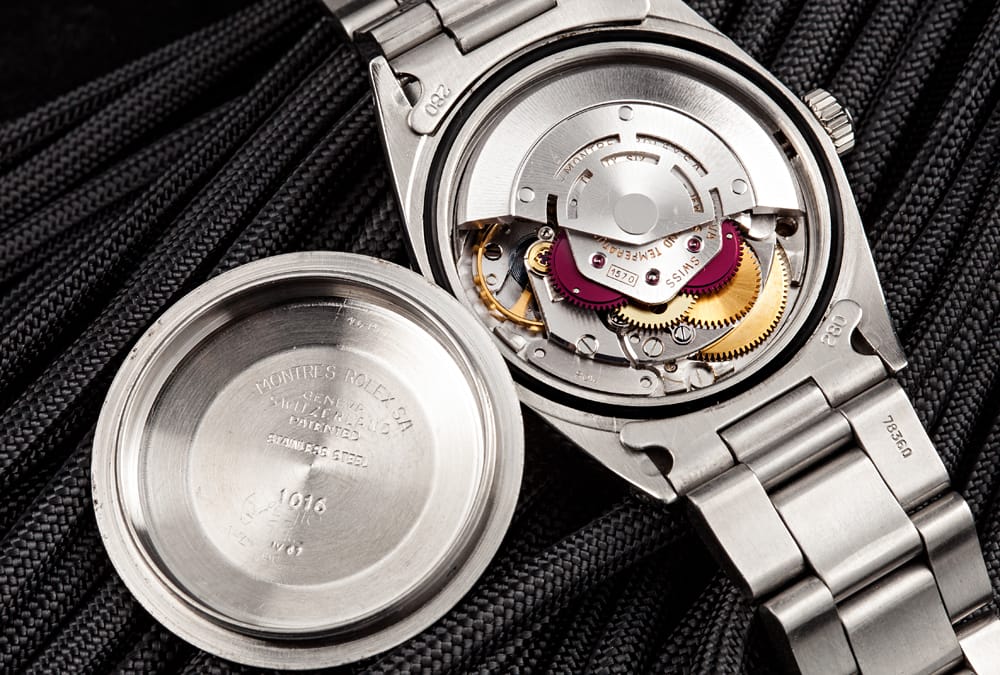
And by exhaustive, I mean practically non-existent. By the late 60s, Rolex had started to phase out the Explorer's gilt dials in favor of matte black replacements with a highly contrasting bright white text. Buoyed by that radical departure, in the early 70s, the Cal. 1560 was swapped for the Cal. 1570, which upped the balance frequency to 19,800vph and brought in a hacking function.
Then, things just sort of stopped. The ref. 1016 was as advanced and as varied as the reference was ever going to get, and it stayed exactly the same until its well-earned retirement in 1989. It never presented any hint of choice in dial color, bezel, handset, or bracelet style, and certainly no precious metal options. That, of course, is a good thing. The idea of the tool watch quickly became diluted through its very success, and what were once designed to be hardy companions on daring adventures started appearing in all sorts of golden finery, their indexes peppered with gemstones.
Not so the ref. 1016 and, to Rolex's credit, the Explorer range as a whole. It stayed true to its origins - a watch so hardy and utterly reliable in build, and so timeless in design, that there is no situation where it would look out of place.
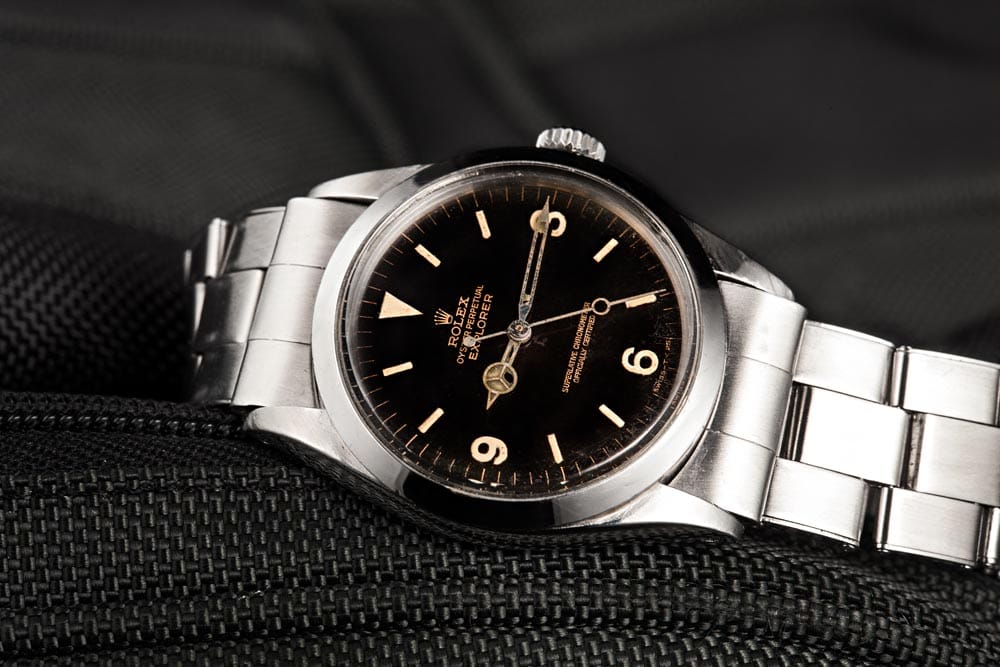
Seasoned Rolex collectors tend to turn to the more obscure pieces in the archives once the usual suspects - Submariner, GMT-Master, Daytona, etc. - have all been bought and safely secured in their winders. The Explorer, and the ref. 1016 in particular, is often the next port of call.
However, those going in expecting a bargain might be disappointed. Entry price is now comfortably into five figures on the pre-owned market, and values can go as high as $30,000 to $40,000 for a first-generation piece in good condition.
There are a couple of reasons for that, both centered around rarity. For starters, spending its life as something of an also-ran means there were simply fewer Explorers made to begin with. In addition, with its purely utilitarian nature, those who bought one were generally not looking for a status symbol, but for the one watch that would serve them faithfully for the rest of their lives, and then get passed down the line to subsequent generations. Basically, those in possession of a ref. 1016 want to stay in possession and just don't put them up for sale that often.
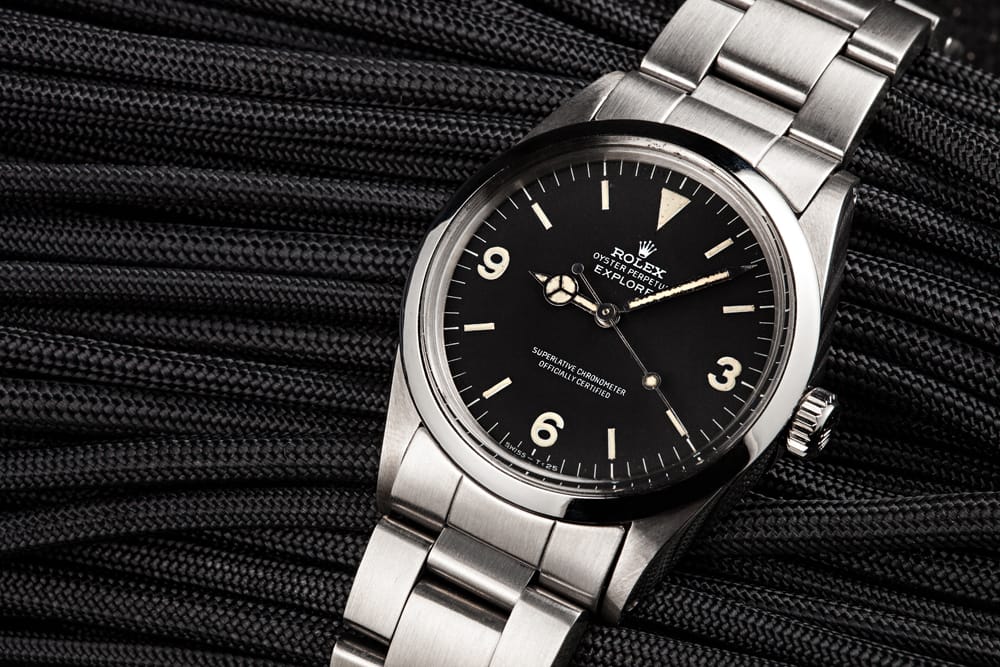
All examples of the watch are rising in value, with the early gilt dial 'Swiss' models most drastically of all, and price trends are predicted to continue. But there is one variant so rare that even the most dedicated brand aficionado can go their whole life without seeing one.
Released in 1963, the Space-Dweller was simply a renamed ref. 1016 Explorer, made to commemorate (and cash in on) the achievements of the Mercury 7 astronauts, the first Americans to orbit the earth. The watch was produced on a trial basis and distributed solely in Japan, where the reception for the NASA crew during their goodwill tour had bordered on the hysterical.
For whatever reason, the Space-Dweller failed to capture the imagination and was never put into production, leaving a mere handful in circulation - somewhere. Very occasionally one will appear at auction, the last time in 2016 where it went for around $85,000.
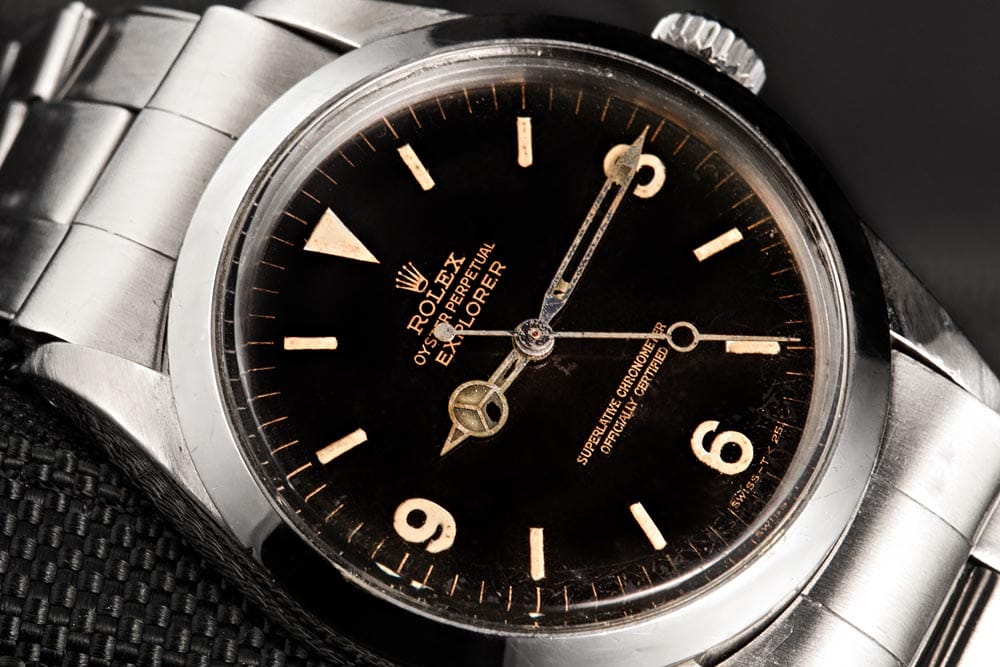
The ref. 1016 is one of those watches that can legitimately be described as gentlemanly. Beautifully balanced, effortlessly stylish, and perfectly capable, it just gets on with its job with the least amount of fuss possible.
It may have gone under-appreciated for the vast majority of its life, but today it stands as one of Rolex's all time greats.
